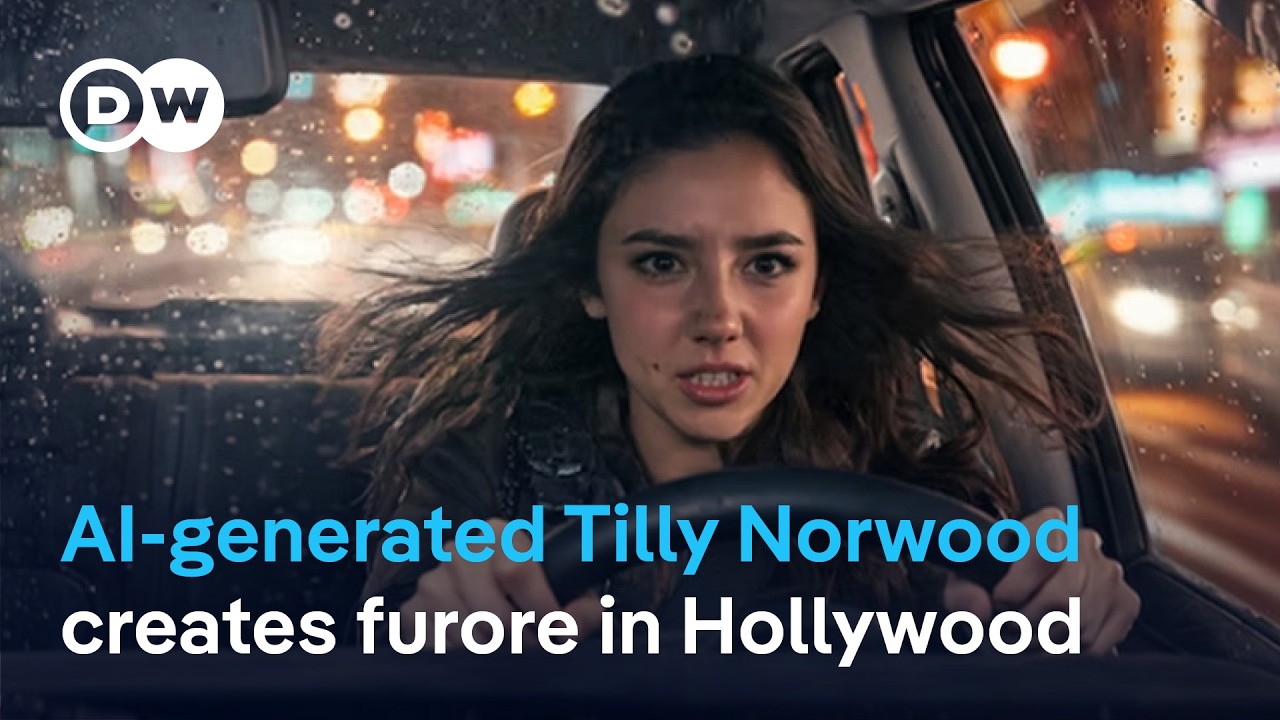The video explores the rise of AI-generated actors like Tilly Norwood, highlighting industry concerns over job security, ethical issues, and the challenge of replicating human authenticity in performances. While AI actors may find roles in experimental or independent projects, human actors and unions remain wary of their impact, emphasizing the unique appeal and emotional connection of real performers.
The video discusses the emergence of Tilly Norwood, an AI-generated actor who has sparked controversy in Hollywood despite never having starred in a movie. Created by Dutch actor and comedian Alen Vanderfeld, Tilly has gained attention with a social media presence and interest from talent agencies looking to sign her. This development has alarmed many human actors, who view AI-generated performers as a threat to their jobs and livelihoods. The largest US actors’ union has expressed strong opposition to replacing human performers with synthetic ones, emphasizing that AI characters like Tilly are created using the work of countless professional actors without their permission or compensation.
Melanie Goodfellow, senior international film correspondent for Deadline, explains that the story of Tilly Norwood went viral after Vanderfeld mentioned at a conference that talent agents were in talks to represent the AI character. This revelation surprised many in Hollywood, as it highlighted the growing intersection between AI creations and the real entertainment industry. Actors are concerned not only about job security but also about the ethical implications of AI being trained on their performances without acknowledgment or payment. The idea of signing an AI actor rather than a human creator has unsettled many within the industry.
When asked whether film studios would realistically replace human actors with AI, Goodfellow suggests that while studios are cautious due to backlash and union protections, the technology is advancing rapidly. Currently, AI-generated characters lack the emotional authenticity and warmth of human actors, making them less appealing for major productions. However, she acknowledges that AI could become more convincing in the near future, potentially changing the landscape of acting and filmmaking. The studios also face potential negative public relations issues if they push AI actors too aggressively, especially after recent strikes focused on protecting actors’ rights.
Goodfellow also reflects on the unique appeal of human actors, noting that audiences are often drawn not just to performances but to the personal stories and charisma of stars like Tom Cruise or Mads Mikkelsen. This human connection is difficult to replicate with AI, which may limit the appeal of AI actors in mainstream cinema. However, she points out that AI could find a niche in independent or non-Hollywood productions, where creators can experiment with new forms of storytelling without the same commercial pressures. The future role of AI actors remains uncertain, but it is clear that the technology is pushing the industry to reconsider traditional boundaries.
Finally, the video touches on the creator Alen Vanderfeld’s perspective, who views AI as a new artistic tool rather than a replacement for human actors. Vanderfeld, herself an actress and comedian, sees AI as a way to explore fresh creative possibilities, similar to how animation or CGI expanded storytelling options. While some have accused her of satire or provocation, Goodfellow believes Vanderfeld is genuinely experimenting with AI technology and was surprised by the backlash. The discussion concludes by acknowledging that AI actors like Tilly Norwood hold up a mirror to society, reflecting both the excitement and fears surrounding AI’s growing role in entertainment.
